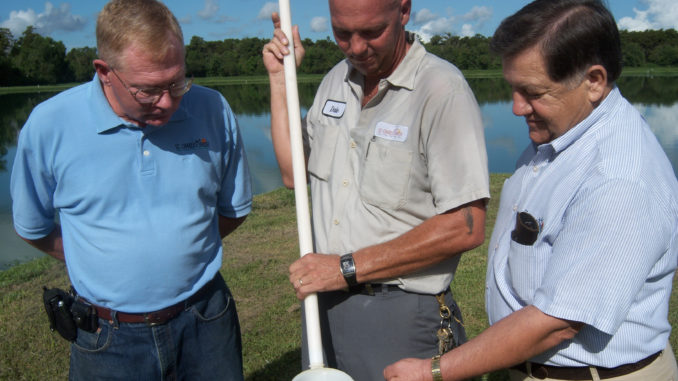
Parish just one of many using treated wastewater to protect residents from storms St. Charles Parish is one of several parishes in Louisiana using treated wastewater to boost wetlands, providing residents with a first level of protection from dangerous storms.
The process of using treated wastewater to increase the marsh growth is called wetlands assimilation and the parish began using this process since January of 2006, a few months after Hurricane Katrina devastated coastal parishes in the state.
“Coastal wetlands are our first line of defense when a hurricane hits the parish,” Greg Bush, director of public works and wastewater for the parish said. “We currently discharge the treated wastewater into 1,100 acres of wetlands from the Luling Oxidation Pond,” Bush said.
During the process, sewage is not being pumped into the marsh. Instead, the effluent from the pond gravity flows into the wetlands.
Bush explains how the process works. “Sewage is not being pumped into the marsh/swamp,” he said.
“Effluent is basically treated water with the raw sewage remaining in the pond to decompose into sludge,” Bush said.
Bush also noted that approximately 1.5 million gallons a day flow into the wetlands, though that number changes depending on the weather. An increase in rainfall will bring about more flow.
Nitrogen and phosphorus are the most common nutrients.
“These nutrients are absorbed by the plant life in the wetlands which enhances their growth,” Bush said. “Wetlands by nature are naturally decaying, in other words, because the soil and plant life is normally underwater, they are in some stage of decay which fish and wildlife are naturally adapted too.
“Our wastewater does alter their environment, but in positive ways,” he said. “It increases the productivity of the plant and animal life to the environment.”
Numerous reports have stated that discharging treated wastewater into wetlands can allow for the potential enhancement and restoration of the functional attributes associated with wetlands.
“Treated wastewater is absorbed by plant life, and Beaux Bridge for example, has been discharging for over 50 years,” he said. “Our discharge is in total compliance with our NPDES permit issued by DEQ in accordance with EPA guidelines. It’s sort of like fertilizing a lawn.”
Wetlands therefore can assimilate more wastewater per unit of energy and with less financial outlay. Because of low capital costs and low energy consumption, many communities are turning to wetland assimilation to increase the marsh area and wetlands vegetation.




Be the first to comment